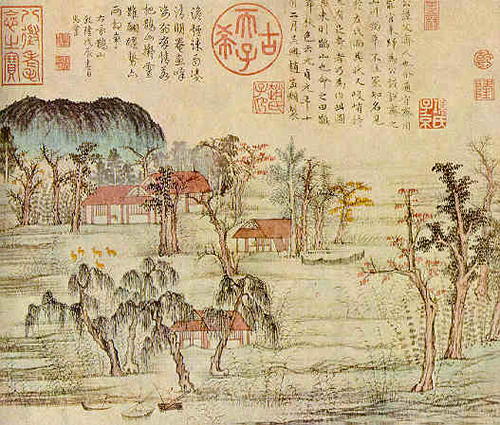
Autumn Colors on the Ch'iao and Hua Mountains by Zhao Mengfu (1254-1322), National Palace Museum, Taipei
The Mongols had a great impact on civilian life in China.
One major contribution in this area is the building of Daidu (present-day Beijing), the second Mongol capital. (Marco Polo calls this city "Cambaluc," for Khan Bhalik, meaning "The City of the Emperor"). Khubilai Khan recognized that the Mongol capital at Khara Khorum was not suitable for a great empire, mainly because it required tremendous logistical efforts to supply the city. About 500 carts a day had to be transported into Khara Khorum to provide essential supplies of food and clothing for the population.
Khubilai thus decided to move the capital farther south into China, to the area that is now Beijing. The new capital, called Daidu, became a typical Chinese-style city, though there also were plenty of Mongol touches associated with the city.
Map of the Yuan Dynasty (the Mongols in China) (Encyclopedia Britannica) showing both their capital in China (called Cambaluc or Dadu/Beijing) and in Mongolia (Karakorum)
Marco Polo's account of life at Cambaluc (Daidu/Beijing) [Text excerpted from The Book of Ser Marco Polo: The Venetian Concerning Kingdoms and Marvels of the East, translated and edited by Colonel Sir Henry Yule]
• Chapter X: Concerning the Palace of the Great Kaan [PDF] — Description of Khubilai Khan's palace at Cambaluc (Daidu/Beijing)
• Chapter XI: Concerning the City of Cambaluc [PDF] — Detailed description of the layout of the city of Cambaluc (Daidu/Beijing)
• Chapter XXII: Concerning the City of Cambaluc, and Its Great Traffic and Population [PDF] — Detailed description of the population and life in the city of Cambaluc (Daidu/Beijing)